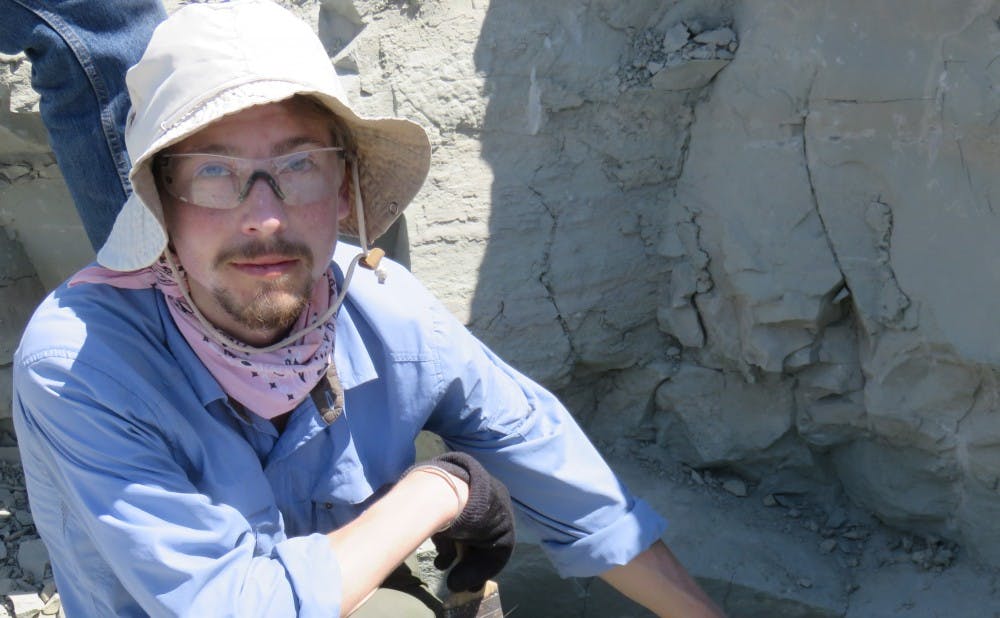What could an ankle bone from a lemur ancestor tell us about human evolution? For Doug Boyer, assistant professor in evolutionary anthropology, it can say quite a lot.
Boyer, along with two colleagues in France, used the talus bone from a specimen of Donrussellia provincialis—a primitive species in the lemur branch of the primate family tree—to find that the early ancestors of humans were skilled leapers. This new discovery by Boyer pushes back on an existing hypothesis in evolutionary anthropology about the evolutionary order of primate characteristics and suggests that primates evolved more to avoid predators rather than to become predators, he explained.
“I think that agility is probably a reflection of predatory pressures,” Boyer said. “We see a lot of extinctions of primate-like animals around that time—60 to 50 million years ago—and I think one of the differences between those animals and primates was not what they were eating or whether they were in the trees or not, but how rapidly they could move in their environment.”
If the earliest primates became agile leapers before they developed features to climb out on branches, then this would clash with the hypotheses suggesting that the earliest common ancestor of primates was specialized for navigating small branches.
“One question that has been asked [in evolutionary anthropology] is why primate features evolved, and one of the answers to that question is that they evolved to stalk insects and prey in the trees,” Boyer said. “This find, in a way, suggests against that because it shows that leaping was becoming important well before grasping and before some of the other features that were required for insect capture became important.”
To reach these conclusions, Boyer looked not only at the physical features of the fossil itself but also at other recent developments in the field.
Physical characteristics of the fossil—which extends less than seven millimeters at its longest stretch and is made up of a body and two protrusions called a neck and head—point toward strong jumping abilities. The body of the fossil is robust, or “deep,” which is common in species that run fast or leap because of the increased stability it provides in situations where a lot of pressure is placed on the ankle. Additionally, the bone’s head and neck are elongated, which indicates that the specimen may have had a long heel and, therefore, a long foot.
Looking beyond the fossil at hand, Boyer said that a recent discovery about the mobility of an ancestor in the monkey’s side of the primate family tree lends credence to his theory. A fossil showed that primitive ancestors of monkeys had long legs and short arms—two characteristics that point toward leaping as the most favored mode of mobility.
“In a way, finding this new ankle helped us triangulate the features of the earliest primates,” Boyer said.
Susan Alberts, Robert F. Durden professor of biology, wrote in an email that Boyer’s find is important not only because it deepens human understanding of our evolutionary history, but also because he developed new methods for measuring bones and used that information to infer their function.
“This represents a big technical advance in a field that deals with almost entirely single bones or bone pieces from 55-60 million year old fossils,” she wrote.
To study the fossil, Boyer used high-resolution scans of the bone, which are available online through the website morphosource.org. This allowed him to view a 3D model of the fossil’s external surface and take measurements of its dimensions and features, though he did bring the fossil to Duke for two months, which enabled him to study parts of it that were difficult to see in scans.
“It actually needed a little bit of cleaning, and I took photographs of it. Even though the scans extend our ability to do research in a lot of ways, it’s always good to have the original specimen,” he said.
The particular bone he used for this study was discovered about 30 years ago in Rians, France by Marc Godinot, who is one of Boyer’s co-authors on the paper. Godinot, who also found the teeth that allowed for the original identification of the Donrussellia provincialis species at the same site, originally did not realize that the ankle bone was from a primate so primitive.
The fossil was dated to around 52 million years old using biochronology, a complex process of dating that compares undated fossils to previously dated fossils.
Boyer’s work with the ankle fossil ties in closely with his overall focus of better understanding human evolutionary history by determining the last common ancestor of primates. Many of the tendencies and histories seen in primate species that are living today—the majority of which are arboreal—are influenced by what that first primate looked like, he explained.
Get The Chronicle straight to your inbox
Signup for our weekly newsletter. Cancel at any time.
Bre is a senior political science major from South Carolina, and she is the current video editor, special projects editor and recruitment chair for The Chronicle. She is also an associate photography editor and an investigations editor. Previously, she was the editor-in-chief and local and national news department head.
Twitter: @brebradham
Email: breanna.bradham@duke.edu

